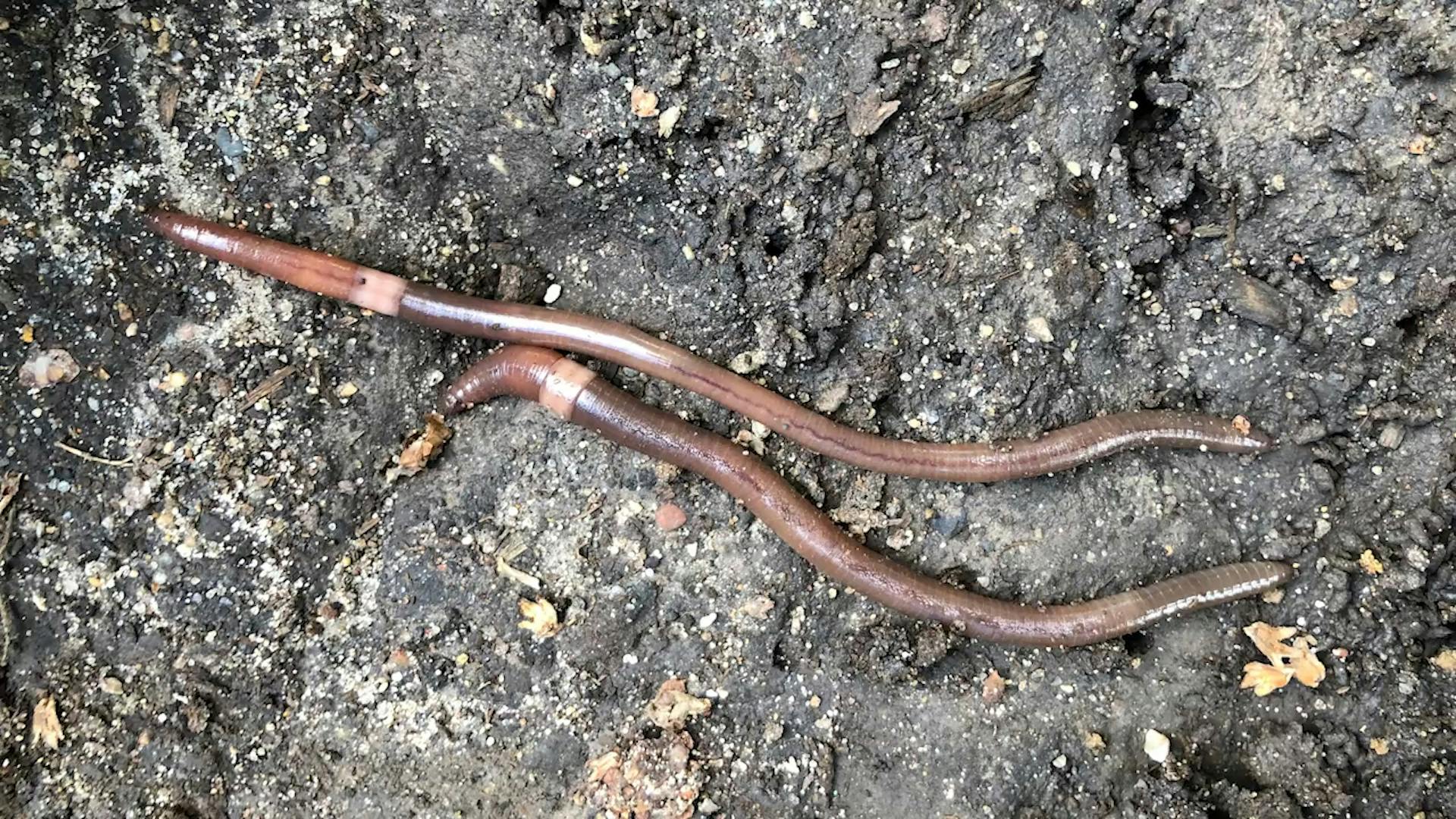State conservation officials are warning Minnesotans about the "jumping worm," an invasive species whose hunger for plant roots has one ecology expert calling it a "horrific" threat to gardens, lawns and forest soil.
"The good news is 'jumping worms' are not well established in Minnesota, and there are actions people can take to prevent their spread," Laura Van Riper, terrestrial invasive species coordinator for the state Department of Natural Resources (DNR), said Monday. "We need gardeners and anglers to be vigilant and to contact the DNR when they think they've found jumping worms."
Native to Asia, jumping worms look similar to night crawlers and other earthworms but have a distinctive light-colored band near the head. They get their name from the intense wiggle they make when they are disturbed.
They have been found in limited areas of Minnesota since 2006, mainly in Minneapolis-St. Paul, the western suburbs and Rochester.
"I never imagined an invasive species as horrific as these jumping worms," Lee Frelich, director of the University of Minnesota Center for Forest Ecology, said while featured in a video newly posted by the DNR.
"When I saw the first forest that was infested ... just from a person walking, the soil slides down the slope," Frelich said. "So plants can't get rooted in it. And if the plants are destroyed, the whole plant pollinator network goes down, and that's the base of the whole ecosystem."
Experts believe they were spread throughout North America by people moving potted plants, soil, compost, mulch and fishing bait.
They work poorly as bait because they "thrash around when you touch them" and break into segments, Frelich said.
Jumping worms live near the surface and "essentially turn the top 2 inches of the soil into small granules or pellets that look like cat litter or coffee grounds," he said. "So when you get a heavy rain, [the soil] can erode away."
That erosion then changes wildlife habitat for a wide range of species, he said.
"Birds, deer, squirrels — everything that lives in the ecosystem — butterflies, pollinators, could all be very negatively impacted by this invasion," Frelich said. "So this is a real threat to native biodiversity in Minnesota. We need to limit it as much as possible."
The DNR lists several ways the spread of jumping worms can be thwarted:
• Don't buy worms advertised as jumping worms, "snake worms," "Alabama jumpers" or "crazy worms" for any purpose.
• Gardeners should inspect incoming mulch or plants for jumping worms, and if swapping plants with friends, wash off the soil and share the plants as bare root plants.
• Recreationists should clean mud off their boots and equipment.
Anyone who believes they have found a jumping worm are encouraged by the DNR to take photos showing the ring around its body and report the information to the Early Detection and Distribution Mapping System website, which is operated by the University of Georgia.
Findings can also be reported to the DNR at 1-888-646-6367 or info.dnr@state.mn.us.
Complex stories of migration are among the finalists for the Women's Prize for Fiction
Olympian Kristi Yamaguchi is 'tickled pink' to inspire a Barbie doll

After 4 decades in music and major vocal surgery, Jon Bon Jovi is optimistic and still rocking
Rom-com author Emily Henry knows the secret to having a healthy relationship with love


